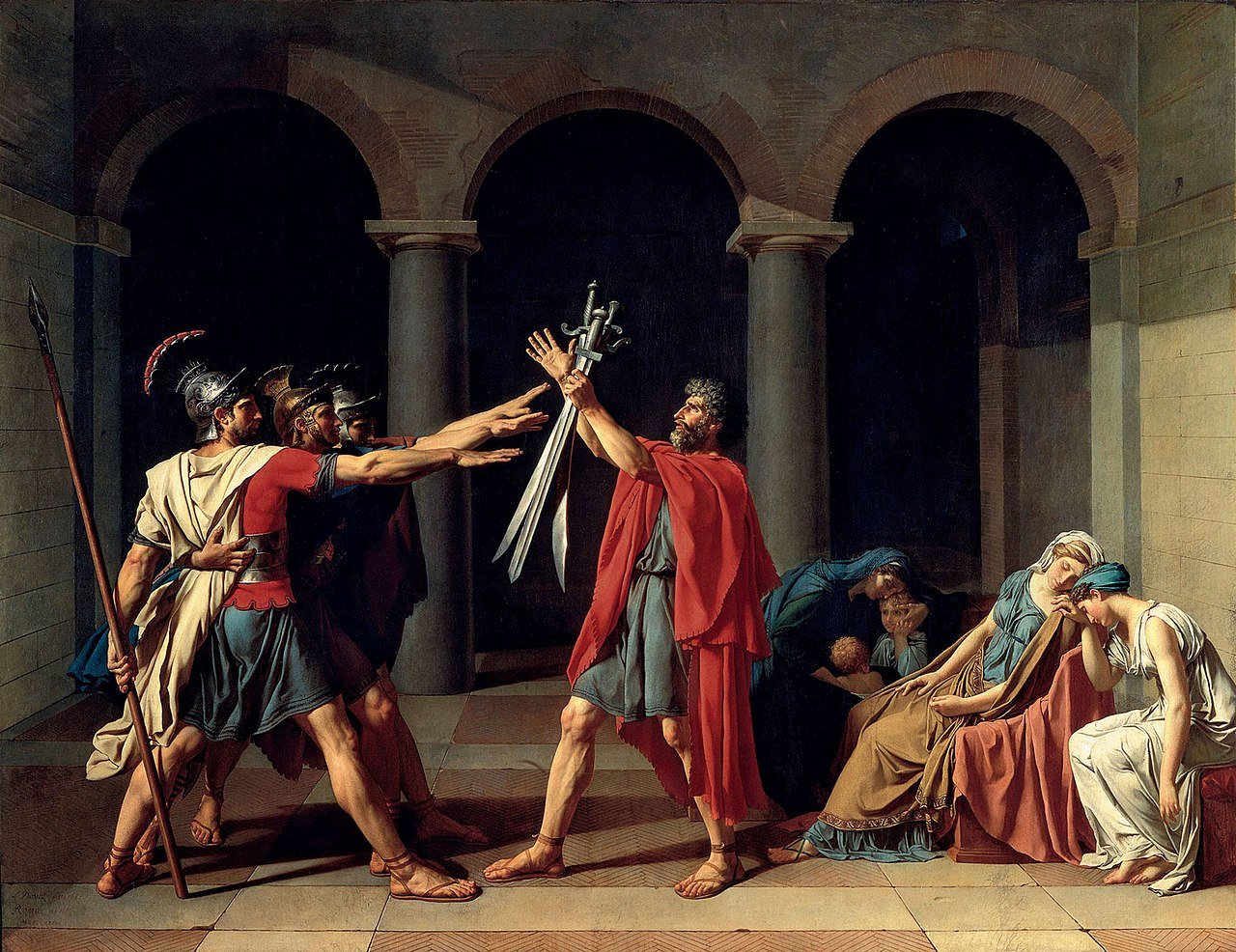Unifying Theme of the Bible

Works of art have unifying themes. The simple motif, three short notes and a long, unifies Beethoven's Fifth Symphony through all four movements. David's Oath of the Horatii above expresses a theme of stark lines against a dark background. A theme of the classic film Citizen Kane is symbolized by the word, "Rosebud," representing the loss of innocence and the complexity of the main character. A theme in The Lord of the Rings is noble self-sacrifice defeating evil.
The Bible, although written by dozens of authors over a period of about 1600 years from three continents and in three different ancient languages, like any great work of art exhibits a clear and coherent theme: God's quest to be with his people and to have his people with him.
This is a great, overarching theme of the Bible. We might even say that it is the major idea of the Bible. Throughout the pages of the Bible, God seeks to be “your God, and you shall be my people.” (Genesis 17:7, for example) The God of the Bible binds himself to a covenant with Abraham and his descendants and then expands the covenant to include whoever is in Christ, male and female, Jew and Greek, slave and free. He seeks to be with “every tongue and tribe and nation.” (Revelation 14:6) Jesus’s final promise in the Great Commission is “I will be with you always, even to the close of the age.” (Matthew 28:20) One of the names of Jesus, Emmanuel, means "God with us." (Matthew 1:23)
Here are two Biblical images that exemplify this great, unifying theme. The first is in Genesis, the first book of the Bible, in which God, the Creator of the heavens and the earth, comes walking in the Garden of Eden. “Adam, where are you?” he calls out, while the man and his wife hide in shame from God’s presence. This, the first question in the Bible, reveals the Creator’s heart for humanity, and the great theme of the Bible.
The second is in the book of Revelation, the last book of the Bible, and it comes after thousands of years of human history. It is the culmination of God’s efforts to bring us to himself, to make a way for us to be with him forever, at incalculable cost to himself. It comes after God himself has taken on human form, to be born, to have his diapers changed, to enjoy the friendship and taunts of the neighborhood boys; to grow up and be tired and hungry; to know the joys and sorrows of human companionship, to weep at the tomb of his friend; to look at the rich young man and love him; to slap his forehead in exasperation and ask “how long will I be with you?” It comes after God the Son, after an eternity of joyful companionship with the Father, cries out in anguish, “My God, my God! Why have you forsaken me?” It is the fulfillment of God’s plan to draw everyone to himself. It is a beatific vision of Heaven:
"Then the angel showed me the river of the water of life, as clear as crystal, flowing from the throne of God and of the Lamb down the middle of the great street of the city. On each side of the river stood the tree of life, bearing twelve crops of fruit, yielding its fruit every month. And the leaves of the tree are for the healing of the nations. No longer will there be any curse. The throne of God and of the Lamb will be in the city, and his servants will serve him. They will see his face, and his name will be on their foreheads. There will be no more night. They will not need the light of a lamp or the light of the sun, for the Lord God will give them light. And they will reign forever and ever." (Revelation 22: 1-5)
The great, overarching theme of the Bible is God wants to be with his people and to have his people with him.
This blog article is an excerpt from my book: Five Languages of Evidence: How to Speak about Reasons for Christianity in a Post-truth World. Not yet published; available upon request.
Next post: Jesus solves the problem of origins